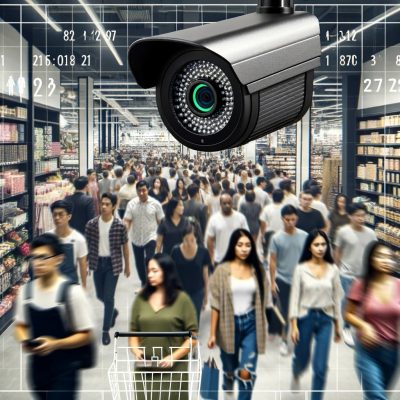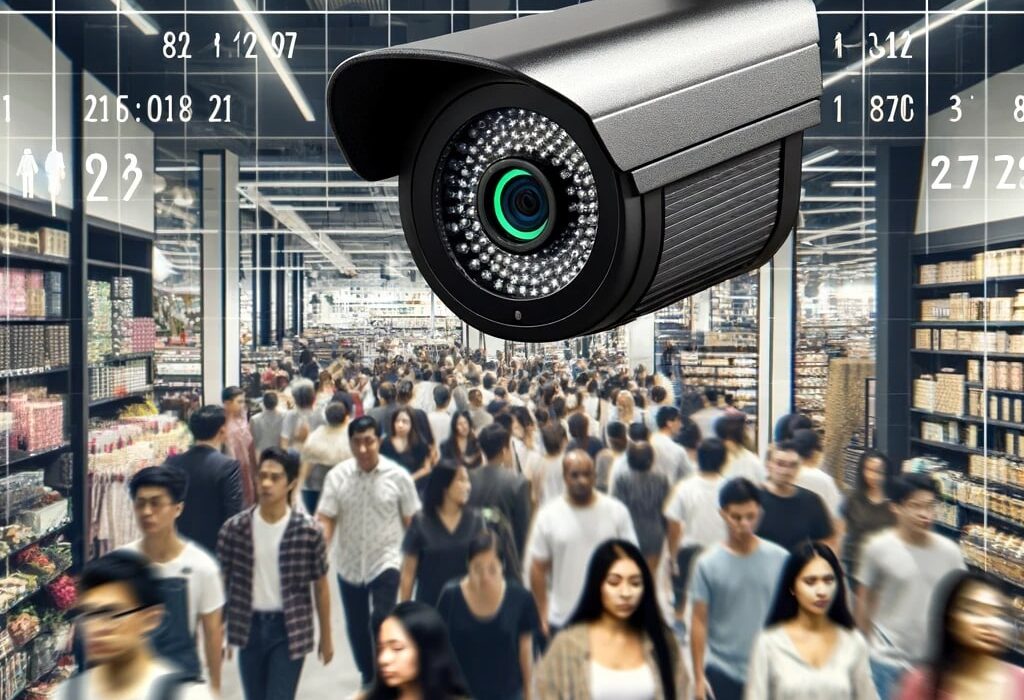Table of Contents
Table of Contents
Tracking retail store traffic can increase sales by up to 20% by helping businesses optimize store layouts, staffing, and marketing efforts. If you’re not measuring foot traffic, you’re missing key insights into customer behavior and opportunities to improve conversions.
Understanding how many people enter your store—and what they do once inside—allows you to make data-driven decisions that enhance the shopping experience and boost revenue. This guide covers the easiest and most effective ways to measure retail store traffic, so you can turn insights into action and maximize every customer visit.
What is retail store traffic?
Retail traffic refers to the number of people who visit your store. This metric is more than just a count; it’s an essential gauge of your store’s health. Knowing the quantity of visits provides invaluable insights into customer behavior and allows you to adjust your business strategies accordingly.

What are footfalls in regards to retail store traffic?
Footfalls refer to the number of individual steps or movements made by people entering or exiting a location, often a retail store. In the context of this article, “counting footfalls” means tracking the number of visitors to a store. It’s a crucial metric that helps businesses understand customer behavior, measure the effectiveness of marketing campaigns, and, ultimately, optimize conversion rates.
The real importance of measuring retail store traffic
Why should physical retail stores be concerned about counting footfalls? The simple answer is conversion rate optimization. When you understand the number of people entering your store, you can calculate how many of them are actually making purchases. This knowledge helps improve your sales strategies, promotional activities, and much more.
How do you measure retail traffic effectively?
Understanding the mechanisms for tracking foot traffic is vital for any retail business. The market offers several methods, each with its unique advantages and disadvantages. Here’s a comprehensive look.
Manual counting (very difficult)
Manual counting, often carried out by an employee holding a clicker, is perhaps the most archaic yet straightforward method. The upside is its simplicity; there’s no need for any sophisticated equipment or setup.
However, it’s a method replete with pitfalls. Human error can drastically influence the numbers. Whether it’s distractions, fatigue, or the inevitable busy rush where tracking becomes overwhelming, inaccuracies are rife. The subjectivity involved also raises questions about the reliability of the data.
For instance, some employees might count a group as a single entity, while others may count each person individually. Such inconsistencies make manual counting a less desirable option for serious analytics.
Beam sensors (not very accurate)
Beam sensors employ infrared technology to shoot a beam across the store’s entrance. When this beam is broken, the sensor registers a visitor. On the surface, this method might seem like a more reliable alternative to manual counting. Yet, it comes with its own set of problems.
False triggers are common; it could be a shopping cart, an enthusiastic child running in and out, or even a pet that decides to explore. Consequently, beam sensors can produce inflated numbers that do not necessarily reflect the actual customer base. In addition, installation and maintenance can sometimes be cumbersome, adding to operational costs.
Thermal imaging (expensive)
Thermal imaging systems are on the higher end of the technological spectrum. They use overhead cameras to capture heat signatures, allowing them to identify and count individuals with high accuracy. However, the pros come with substantial cons.
First, the setup is usually expensive, often prohibitively so for smaller retailers. Second, installation can be a challenging endeavor, requiring a clear, unobstructed view of the entrance area. Even a simple decorative element like a hanging sign can interfere with the device’s field of vision, leading to compromised results.
Solink + your security cameras (easiest and most accurate)
Measuring retail store traffic isn’t just about counting people—it’s about understanding customer behavior, optimizing store performance, and increasing revenue. Solink does more than just track foot traffic; it transforms that data into actionable insights to help retailers make smarter business decisions.
With AI-powered video analytics, Solink uses your existing security cameras to accurately track customer movement, dwell times, and high-traffic zones—without the need for expensive new hardware. Heatmaps and zone tracking allow retailers to see exactly where shoppers are engaging and which areas may need improvement. Unlike basic people counters, Solink integrates with your POS system, allowing you to calculate conversion rates by comparing foot traffic to actual sales. This helps retailers determine if in-store promotions, product placements, or staffing strategies are truly effective.
Even better, Solink’s cloud-based platform provides remote monitoring, meaning retailers can check store traffic patterns, verify marketing execution, and optimize operations across multiple locations—all from one dashboard. By combining real-time foot traffic data, sales integration, and advanced video analytics, Solink is the most powerful tool for retailers looking to increase conversions, improve store layout, and maximize every customer visit.
The Solink Solution: AI Video Analytics
Solink offers a breakthrough solution by integrating with your existing video analytic security cameras to count people entering and exiting your retail store. The built-in AI video analytics automates counting devices that offer real-time data.
The benefits of using Solink for measuring retail traffic
Using Solink as your people counting tool has a lot of advantages over installing single-function equipment.
Hidden and non-intrusive
Because it uses existing cameras, the integration of people-counting is invisible to customers, providing an unobtrusive shopping experience.
Automated data on the Solink Dashboard
Through this specific camera integration Solink can not only help count people but also provide this data directly on your Solink Dashboard. You get to see real-time metrics, including conversion rates, without having to sift through spreadsheets.
Measure your retail traffic and understand conversion rates
The world of retail is becoming more competitive every day. To stay ahead, you need the most reliable and efficient tools at your disposal. Don’t settle for less; make the smart choice and let your smart camera’s integrate with Solink to transform your retail analytics and conversion rate optimization strategies.
To see how your cameras can help your business, sign up for a demo today.

